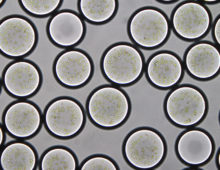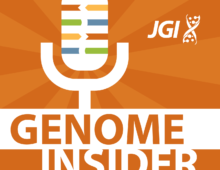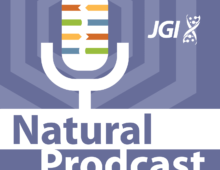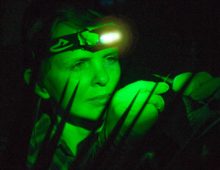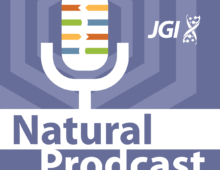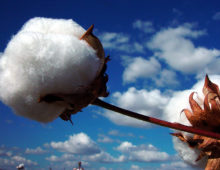A team successfully combined synthetic biology and microfluidics to develop a platform that mimics chloroplast.
Genome Insider Episode 3: River Microbiomes From Around The World
The Genome Insider podcast presents JGI-supported research by Kelly Wrighton and her team at Colorado State University in Fort Collins. With more than a dozen principal investigators, the group has a massive undertaking: sequencing the world’s river microbiomes. JGI is a user facility of the Department of Energy (DOE) Office of Science and located at the Lawrence Berkeley National Laboratory in Berkeley, CA.
Natural Prodcast Episode 8: Eric Schmidt
This episode of the Natural Prodcast podcast features guest Eric W. Schmidt from the University of Utah, a natural products chemist who works in a wide variety of marine organisms. The interview was conducted at the SIMB Natural Products conference in January 2020.
JGI Earth Month: The Unusual Metabolism That Helps Plants Withstand Drought
For JGI Earth Month, Karolina Heyduk, an evolutionary plant biologist at the University of Hawai’i at Mānoa shares how crassulacean acid metabolism, or CAM, helps plants take the heat.
JGI Earth Month: Wetlands Work in #TenHundredWords
For JGI Earth Month, graduate student Mo Kaze took on the challenge of explaining her research using the ten hundred most commonly used words in the English language. Her work focuses anthropogenic impacts on wetland microbiome composition and metabolism. The #TenHundredWords Challenge was inspired by Randall Munroe’s xkcd comic “Up Goer Five” and his subsequent book Thing Explainer.
How to Target a Microbial Needle within a Community Haystack
A team developed a pipeline to first target cells from uncultivated microbes, and then retrieve and characterize their genomes.
JGI Earth Month: Lessons in Nature’s Resilience
As part of JGI Earth Month, revisiting lessons in Nature’s resilience resulting from studies by Berkeley Lab researchers, including JGI scientists, to understand how the microbial communities in the waters responded to the influx of oil.
Natural Prodcast Episode 7: Ben Shen
Enediynes, enabling technologies, and leveraging a large microbial strain collection for natural product discovery. In Episode 7 of Natural Prodcast, Ben Shen from The Scripps Research Institute (TSRI) chats with Dan Udwary and Alison Takemura about enediynes and their use in medicine, how Ben got fascinated with natural products by working on terpene chemistry, TSRI’s acquisition of the Pfizer strain collection, and our collaborations to sequence that collection, mine genomes, and develop new technology to access natural products.
JGI Earth Month: Healthy Streams, Nutritious Microbes?
As part of JGI Earth Month, hear from Ed Hall, an ecologist at Colorado State University in Fort Collins. He’s investigating how microbes in the Arkansas River might be influencing the river’s health.
Picking Up Threads of Cotton Genomics
In Nature Genetics, a multi-institutional team has sequenced and assembled the genomes of the major cotton lineages.
